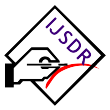Imp Links for Author
Imp Links for Reviewer
Research Area
Subscribe IJSDR
Visitor Counter
Copyright Infringement Claims
Indexing Partner
|
Published Paper Details
|
|
| Paper Title: | Pneumonia Detection Using X-ray Images by Shallow CNNs |
| Authors Name: | Khushboo Lalwani , Rashmi Upasani |
| Unique Id: | IJSDR2305186 |
| Published In: | Volume 8 Issue 5, May-2023 |
| Abstract: | Pneumonia is a hazardous interstitial lung disease that is considered life-threatening and is responsible for taking away the lives of infants, children under the age of five and adults over the age of 65. Pneumonia is a respiratory infection that causes inflammation in the air sacs of one or both lungs and is mainly caused by viruses, fungi and bacteria. According to google, over 10 million people in India are diagnosed and affected by CAP every year. WHO (World Health Organization) reported that every one in three deaths is caused by pneumonia in India, which is extremely alarming. Detection of pneumonia on early stages can be crucial as it helps in speeding-up the recovery rate in children as well as adults. In order to increase and improve the efficiency of the predicted results, chest x-ray images are proven to be helpful as it helps the doctors to examine your lungs and blood vessels. These images help radiologists to look for white spots in your lungs which indicates infection but to obtain the results that are that are as true as he predicted results, deep learning has changed the game in the field of medical image analysis as neural networks are impacting the accuracy of the results drastically since the last few years. A Convolutional Neural Network (CNN or ConvNet) is a type of deep learning network that can learn patterns directly from data. CNNs were created expressly to recognise patterns in images, allowing them to distinguish between objects, classes, and categories. In addition to categorising image data, they can also be used successfully to categorise audio, time-series, and signal data. To make things less complex and more efficient, we trained the model with less parameters so that it is shallower in depth and easy to train with more accurate results. We used a dataset [5] of 5125 x-ray images where 4172 images belong to the training set, 1044 images belong to the validation set and 624 images belong to the test set. This chest x-ray dataset [5] was distributed and labelled between 2 classes, 0 and 1 respectively indicating normal (no pneumonia) and pneumonia. On training this dataset [5], the results received for validation set was that validation loss was brought down to 0.1560 and the validation accuracy received was 0.94 which is equivalent to 94%. In the testing set, the test loss was brought down to 0.4381 and the test accuracy obtained was 0.8324 which is equivalent to 83.24%. |
| Keywords: | CNN, deep learning, image classification, medical image analysis, Pneumonia, x-ray images |
| Cite Article: | "Pneumonia Detection Using X-ray Images by Shallow CNNs", International Journal of Science & Engineering Development Research (www.ijsdr.org), ISSN:2455-2631, Vol.8, Issue 5, page no.1170 - 1177, May-2023, Available :http://www.ijsdr.org/papers/IJSDR2305186.pdf |
| Downloads: | 000337209 |
| Publication Details: | Published Paper ID: IJSDR2305186 Registration ID:206387 Published In: Volume 8 Issue 5, May-2023 DOI (Digital Object Identifier): Page No: 1170 - 1177 Publisher: IJSDR | www.ijsdr.org ISSN Number: 2455-2631 |
|
Click Here to Download This Article |
|
| Article Preview | |
|
|
|
Major Indexing from www.ijsdr.org
| Google Scholar | ResearcherID Thomson Reuters | Mendeley : reference manager | Academia.edu |
| arXiv.org : cornell university library | Research Gate | CiteSeerX | DOAJ : Directory of Open Access Journals |
| DRJI | Index Copernicus International | Scribd | DocStoc |
Track Paper
Important Links
Conference Proposal
ISSN
 |
 |
DOI (A digital object identifier)
  Providing A digital object identifier by DOI How to GET DOI and Hard Copy Related |
Open Access License Policy
Social Media
Indexing Partner |
|||
| Copyright © 2024 - All Rights Reserved - IJSDR | |||






Facebook Twitter Instagram LinkedIn